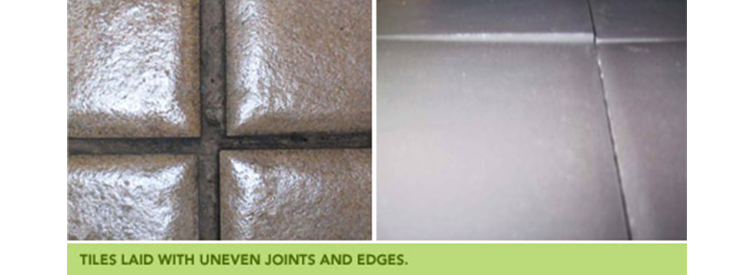
A good, professional tile laying project will ensure that all the joints are even and the edges of each tile are nice and level.
When two tiles are not level and the edge of one is higher than the next, it is referred to a 'lipping.' If a tiler leaves the project with lipping tiles, he should be prepared to fix them.
Lipping can occur if the tiler sets large or heavy tiles into a thick bed of adhesive and the tile settles or slumps unevenly into the adhesive. There are special adhesives available for these large format tiles that will minimise this issue.
If a tile is not quite flat, extra care must be taken when laying to avoid lipping. There are standards within ceramic manufacturing that allow for a certain amount of curvature across a tile. Only tiles that satisfy the standard will be sold as first grade and these can be laid without any lipping.
The standards also cover an allowable variation in tile size, or dimension. Within this standard, tiles can be laid without obvious uneven or crooked joints. All Ranjanas Ceramics are graded within these tolerances.
If the finished tiled floor has uneven grout joints, or lipping on the edges of tiles, you will need to talk to the tiler or builder about rectification.
The issue of lipping can cause a person to trip. It is also likely that the tiles will chip where the surface of a floor between tiles is uneven. This is especially the case if heavy furniture is dragged across the uneven edge.
Your tiles will last a long time, and you should expect that they are laid flat and even with consistent grout joints.